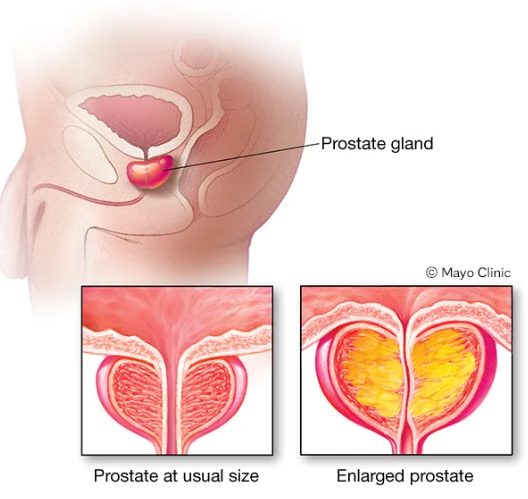Introduction
Prostate health is an important aspect of a man’s well-being. One common issue that affects many men, especially as they age, is an enlarged prostate. In this article, we will explore what an enlarged prostate is, its causes, symptoms, and various treatment options available.
What is an Enlarged Prostate?
Definition
An enlarged prostate, also known as benign prostatic hyperplasia (BPH), is a non-cancerous condition where the prostate gland increases in size. The prostate gland is a walnut-sized gland located below the bladder and surrounding the urethra. Its main function is to produce semen, which nourishes and transports sperm.
Prevalence
BPH is a prevalent condition among aging men. As men reach their 40s and 50s, the likelihood of developing an enlarged prostate increases significantly.
Causes
The exact cause of BPH is not fully understood, but it is believed to be influenced by hormonal changes related to aging. Dihydrotestosterone (DHT), a hormone derived from testosterone, is thought to play a role in prostate growth.
Symptoms of an Enlarged Prostate
The symptoms of an enlarged prostate can vary from mild to severe and may include:
Frequent Urination
Men with BPH often experience the need to urinate more frequently, especially during the night. This is known as nocturia.
Difficulty in Urinating
An enlarged prostate can obstruct the flow of urine through the urethra, making it difficult to initiate urination or maintain a steady stream.
Incomplete Emptying of the Bladder
The obstruction caused by an enlarged prostate may prevent the complete emptying of the bladder, leading to a feeling of residual urine.
Weak Urine Stream

Men with BPH may notice a weaker urine stream, which can be frustrating and concerning.
Urinary Tract Infections
Incomplete bladder emptying can increase the risk of urinary tract infections (UTIs) as urine remaining in the bladder becomes a breeding ground for bacteria.
Risk Factors
Certain factors can increase the risk of developing an enlarged prostate, including:
Age
Advancing age is the most significant risk factor for BPH. As men get older, the likelihood of an enlarged prostate increases.
Family History
If a man has a family history of BPH, he may be at a higher risk of developing the condition himself.
Hormonal Changes
Hormonal changes, particularly the increase in DHT levels, can contribute to prostate growth.
Diagnosis
Diagnosing an enlarged prostate involves several tests and examinations, including:
Digital Rectal Examination (DRE)
During a DRE, a healthcare provider examines the prostate by inserting a gloved, lubricated finger into the rectum to feel for any abnormalities.
Prostate-Specific Antigen (PSA) Test
The PSA test measures the level of PSA in the blood, which can be elevated in men with BPH or prostate cancer.
Ultrasound
An ultrasound may be used to visualize the prostate and assess its size and structure.
Biopsy
In some cases, a biopsy may be performed to rule out prostate cancer, especially if the PSA levels are significantly elevated.
Treatment Options
The treatment for an enlarged prostate depends on the severity of symptoms and the impact on the individual’s quality of life. Some common treatment options include:
Watchful Waiting
For men with mild symptoms, watchful waiting involves regular monitoring of the condition without immediate intervention.
Medications
Various medications can help manage BPH symptoms, such as alpha-blockers and 5-alpha-reductase inhibitors.
Minimally Invasive Procedures
Minimally invasive procedures, like transurethral resection of the prostate (TURP) or laser therapy, can help alleviate symptoms.
Surgery
In severe cases, surgery may be recommended to remove a portion of the prostate gland.
Lifestyle Changes
In addition to medical treatments, lifestyle changes can also make a significant difference in managing BPH symptoms. Some of these changes include:
Diet and Exercise
Maintaining a healthy diet and engaging in regular exercise can contribute to overall prostate health.
Bladder Training
Bladder training techniques can help improve bladder control and reduce the frequency of urination.
Limiting Fluid Intake
Reducing fluid intake, especially before bedtime, can help manage nighttime urination.
Coping with an Enlarged Prostate
Dealing with BPH can be challenging, but there are ways to cope with the condition:
Support Groups
Joining support groups or online communities can provide valuable emotional support and tips for managing the condition.
Emotional Well-being
Maintaining emotional well-being is essential, as stress and anxiety can exacerbate BPH symptoms.
Prevention
While it may not be possible to prevent an enlarged prostate entirely, certain measures can promote prostate health:
Healthy Lifestyle
Eating a balanced diet, exercising regularly, and avoiding smoking and excessive alcohol consumption contribute to overall prostate health.
Regular Check-ups
Routine visits to a healthcare provider can help monitor prostate health and detect any issues early on.
Conclusion
An enlarged prostate is a common condition that can significantly impact a man’s quality of life, especially as he gets older. By understanding the causes, symptoms, and treatment options for BPH, men can take proactive steps to manage the condition effectively and maintain good prostate health.
FAQs
1. Can an enlarged prostate lead to prostate cancer?
While an enlarged prostate (BPH) does not cause prostate cancer, the two conditions can coexist. It is essential to undergo regular check-ups and screenings to monitor prostate health.
2. Is BPH a life-threatening condition?
BPH itself is not life-threatening. However, severe symptoms can affect a person’s quality of life. It is crucial to seek medical advice if symptoms worsen.
3. Can lifestyle changes alone treat an enlarged prostate?
For some men with mild BPH symptoms, lifestyle changes may be sufficient to manage the condition effectively.






